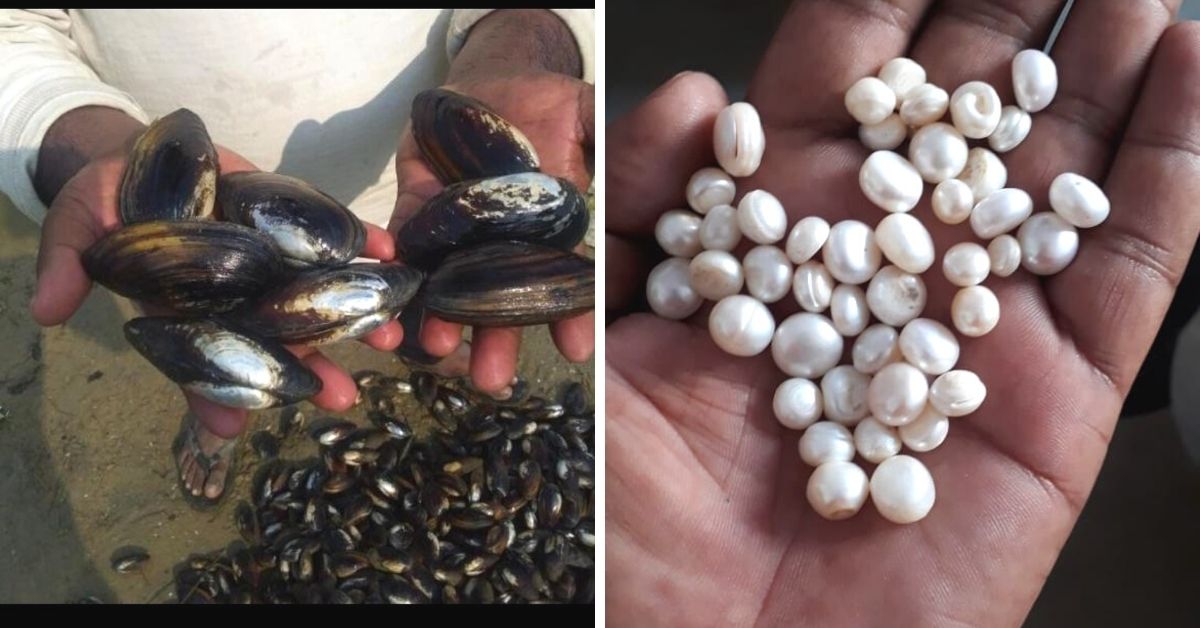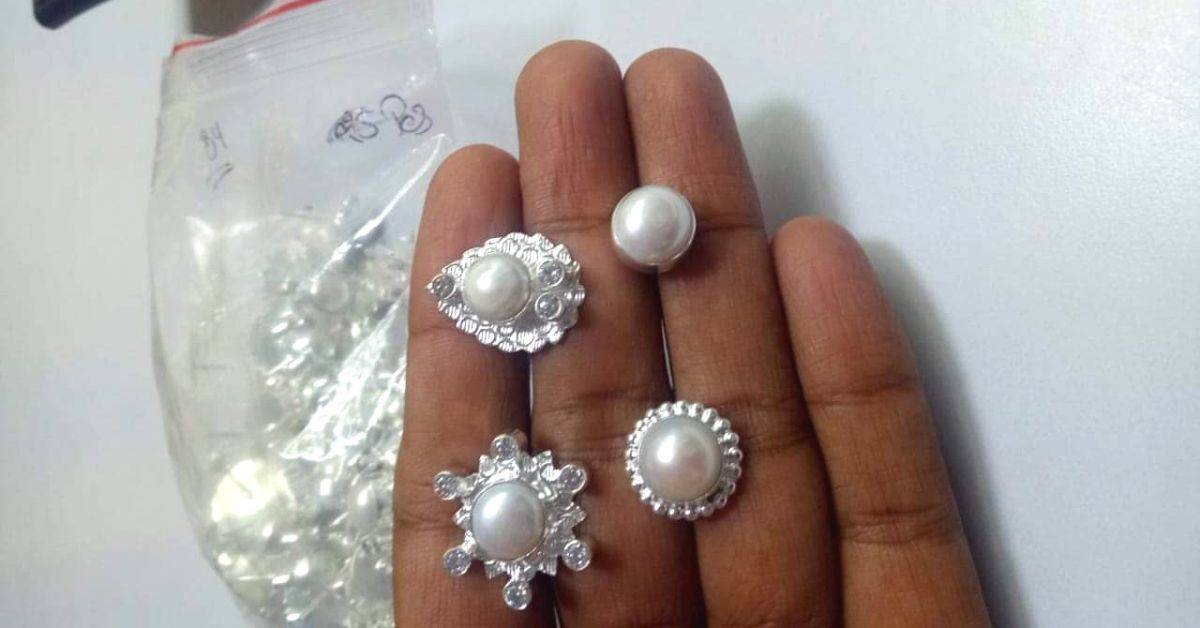For 10 years, Narendra Garwa from Renwal village in Rajasthan, sold books in the busy market and earned a meagre income of Rs 3 lakh per annum. But little did he know that his interest in watching YouTube videos while selling books would double his income.
Narendra says that in 2015, he came across videos about pearl farming and felt intrigued by it. “I learned that it was an easy activity to pursue and it did not require much of an investment and earned good returns,” he tells The Better India.
The 45-year-old adds, “There is always a water shortage in Rajasthan, and I thought that if I could manage to pull off the feat with less water, it would become a lucrative prospect.”
The same year, he signed up for a pearl farming course at Central Institute of Freshwater Culture (CIFA) in Odisha and attended a five-day course.
Stepping Stones to Success

“I learned the techniques and basics of pearl farming and returned to start the same in a 10×10 feet pond. I procured 500 oysters from Kerala at the cost of Rs 40,000. My first attempt was a disaster,” he says, adding that only 35 of the oysters survived.
He approached the scientists at CIFA to seek guidance and learned that he failed to maintain the pH levels and ammonia concentration in the water that resulted in the massive loss.
Dr Shailesh Saurabh, a senior scientist at CIFA, says, “Narendra lacked experience and needed some guidance on introducing the oysters in the pond, managing them and its feed. The pond temperatures and environment need to be monitored at all times for its oxygen levels and other parameters.”
Dr Shailesh says that he guided Narendra step-by-step during the second attempt when the farmer planted 300 oysters, which was a success.
Narendra says that he earned a profit of Rs 1.5 lakh from it and invested the amount further to increase production.
Today, he grows 3,000 oysters in about 70 small ponds, earning him Rs 7 lakh a year.
Explaining the process, he says that the oysters are soaked in freshwater for 24 hours before they are introduced to the pond, where they undergo the pearl formation process. “Once introduced in the pond, they are fed for 15 days to reduce the mortality rate. Once they are mature, the pearl nucleus is introduced carefully in the oysters as a feed by maintaining a water temperature of 15-30 degrees Celsius. A year later, the oyster processes high-quality pearls,” he says.
Narendra says that monitoring the health of the water throughout the growth period is crucial to achieving high quality and volume of produce. “The survival rates for my pearl farming has increased from 30 per cent to over 70 per cent,” he adds.
He says that each pearl can fetch between Rs 200 and Rs 1,000 depending on the size and quality.
Doubling Farmer Incomes

Narendra says that he wanted to extend the benefits to other farmers and started Alkha Foundation, an NGO to train the community.
“I conduct a two-day training workshop for farmers on pearl farming techniques, which costs Rs 4,000. It also doubles up as an income source. Pearl farming does not have to be a full-time job and can be pursued in one’s free time. A pond can help double a farmer’s income without a heavy investment,” he explains.
Krishan Sharma is one such farmer who took training from Narendra in November 2020. “I learned the techniques and now have 1,500 oysters. I expect them to earn me an income of Rs 3 lakh by the end of this year,” he says.
Narendra claims that he has trained over 200 farmers across India and aims to continue the same. Though he receives many inquiries and has become successful, Narendra says that the journey was difficult.
“My friends and relatives doubted and mocked me. Some failed to accept that pearls could be grown artificially, especially at home,” he recalls.
He feels that more farmers should take up pearl farming as an alternative and lucrative source of income. “The business can help double one’s earnings with less investment of money and time,” he adds.
Edited by Yoshita Rao
No comments:
Post a Comment